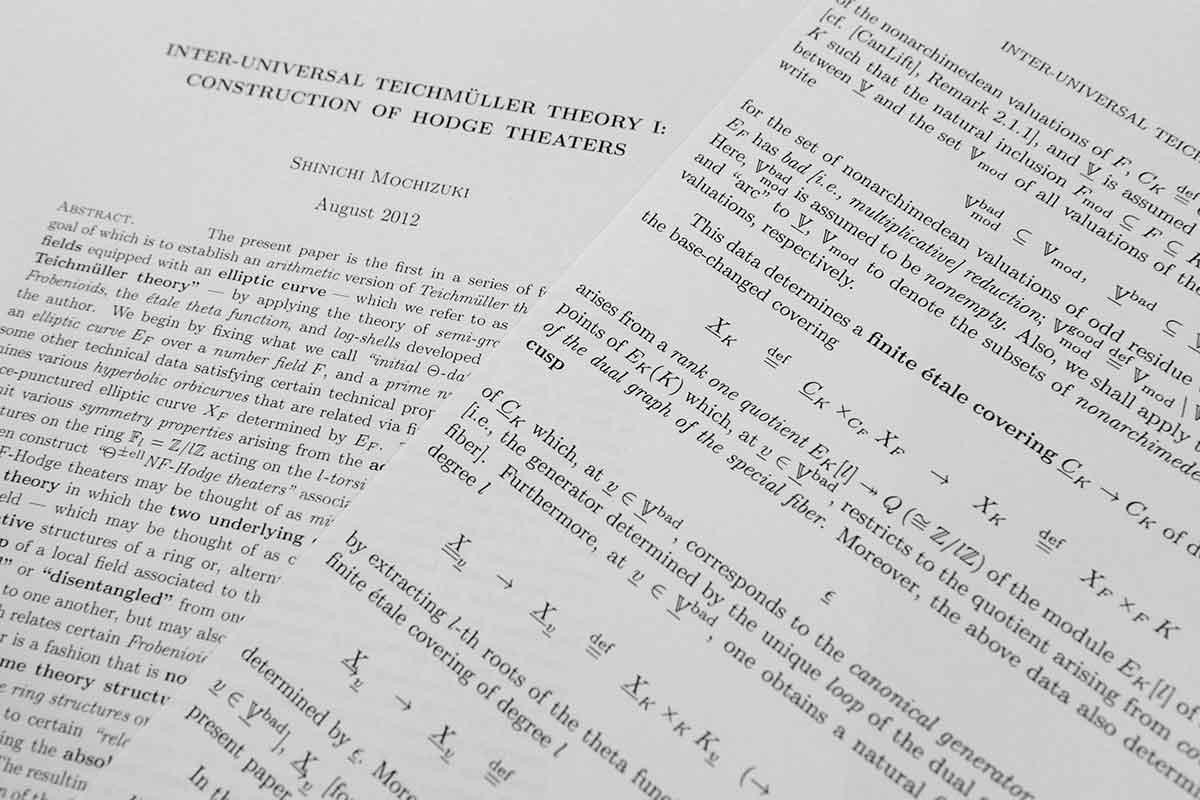Is there an error in there somewhere?
It’s the stuff of Hollywood. Somebody somewhere is surely selling the movie rights to what’s become the biggest spat in maths: a misunderstood genius, a 500-page proof almost nobody can understand and a supporting cast squabbling over what it all means. At stake: nothing less than the future of pure mathematics.
In 2012, Shinichi Mochizuki at Kyoto University in Japan produced a proof of a long-standing problem called the ABC conjecture. Six years later the jury is still out on whether it’s correct. But in a new twist, Peter Scholze at the University of Bonn – who was awarded the Fields Medal, the highest honour in maths, in August – and Jakob Stix at Goethe University Frankfurt – who is an expert in the type of maths used by Mochizuki – claim to have found an error at the heart of Mochizuki’s proof.
Roll credits? Not so fast. The pairs’ reputation means that their claim is a serious blow for Mochizuki. And a handful of other mathematicians claim to have lost the thread of the proof at the same point Scholze and Stix say there is an error. But there is still room for dispute.
a + b = c?
The ABC conjecture was first proposed in the 1980s and concerns a fundamental property of numbers, based around the simple equation a + b = c. For a long time, mathematicians believed that the conjecture was true but nobody had ever been able to prove it.
To tackle the problem, Mochizuki had to invent a fiendish type of maths called Inter-universal Teichmüller (IUT) theory. In an effort to understand IUT better, Scholze and Stix spent a week with Mochizuki in Tokyo in March. By the end of the week, they claim to have found an error.
The alleged flaw comes in Conjecture 3.12, which many see as the crux of the proof. This section involves measuring an equivalence between different mathematical objects. In effect, Scholze and Stix claim that Mochizuki changes the length of the measuring stick in the middle of the process.
No proof
“We came to the conclusion that there is no proof,” they write in their report, which was posted online on 20 September.
But Ivan Fesenko at the University of Nottingham, UK, who says he is one of only 15 people around the world who actually understand Mochizuki’s theory, thinks Scholze and Stix are jumping the gun. “They spent much less time than all of us who have been studying this for many years,” says Fesenko.
Mochizuki has tried to help others understand his work, taking part in seminars and answering questions. Mochizuki was even the one who posted Scholze and Stix’s critical report. “We have this paradoxical situation in which the victim has published the report of the villain,” says Fesenko with a laugh. “This is an unprecedented event in mathematics.”
So is the proof wrong or just badly explained? Fesenko thinks that the six-year dispute exposes something rotten at the heart of pure mathematics. These days mathematicians work in very narrow niches, he says. “People just do not understand what the mathematician in the next office to you is doing.”
This means that mathematicians will increasingly have to accept others’ proofs without actually understanding them – something Fesenko describes as a fundamental problem for the future development of mathematics.
This suggests the story of Mochizuki’s proof may forever lack a satisfactory ending – becoming a war between mathematicians that is doomed to spiral into infinity. “My honest answer is that we will never have consensus about it,” says Fesenko.
For more such insights, log into www.international-maths-challenge.com.
*Credit for article given to Douglas Heaven*


